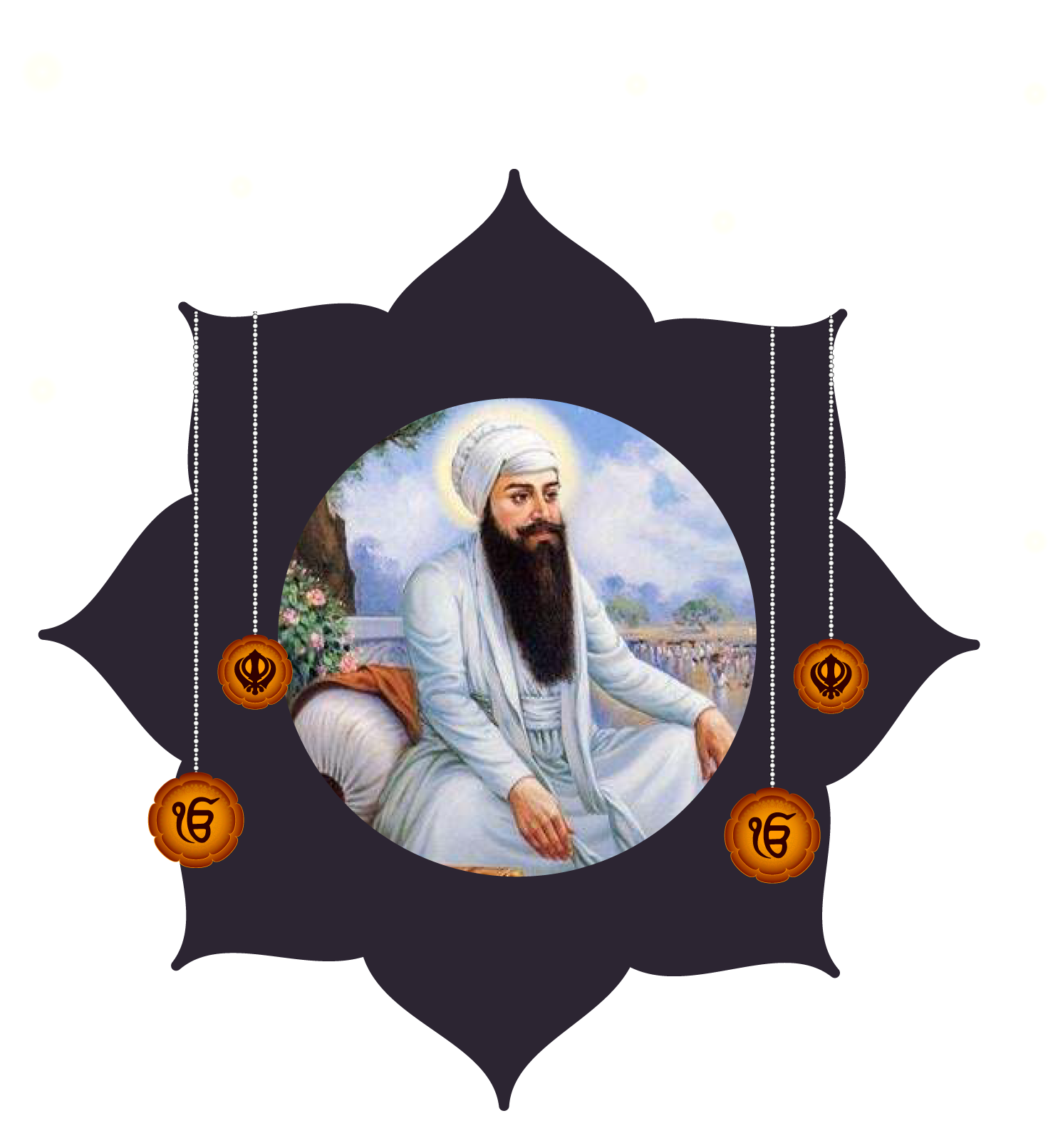
The fourth of Sikhism's Ten Gurus, Sri Guru Ram Das Ji, (Friday, October 9, 1534 - Saturday, September 16, 1581). With the birth name Jetha, Guru Ji was born in the year 1534 in the city of Lahore to parents Bhai Hari Das ji and Mata Anup Devi ji. Bhai Jetha was raised by his maternal grandmother after becoming an orphan at the age of 7. Bhai Jetha first encountered Sri Guru Amar Das Ji, the third Sikh Guru, when he was 12 years old. From that point forward, Bhai Jetha rendered utmost devotion and humility in serving Guru Amar Das Ji and the Sikh populace. He was wed to Bibi Bhani Ji, Guru Amar Das Ji's younger daughter.
Guru Amar Das Ji renamed Bhai Jetha Ji as Ram Das ("servant of God") and appointed him as Sri Guru Ram Das Ji, the fourth Guru of the Sikhs, in the year 1574 after having put Bhai Jetha's spirit of service and sacrifice through numerous tests throughout the years.
Guru Ram Das ji authored 638 pious hymns to 30 distinct ragas of Indian classical music, which are included in his bani (spiritual revelations and writings). The holy book Sri Guru Granth Sahib contains a list of these hymns. Guru Ram Das ji conveyed a universal message through his writings: lead a disciplined life full of humility and be eternally grateful to the True Guru (God).
Up to his death in 1581, Guru Ram Das Ji served as the Sikhs' guru for a period of seven years. In particular, Guru Sahib concentrated on structuring Sikh society during his guruship. The township of Ramdaspur, which later developed into Sri Amritsar Sahib, the holy city and ongoing spiritual and political hub of the Sikh faith, was founded and planned by him. After establishing the city, Guru ji invited and assisted in settling craftsmen and dealers from 52 various professions, which fueled the town's quick expansion and eventual transformation into the largest commercial hub in the northern Indian subcontinent.
This was a significant turning point for the Sikh community because Guru Sahib created a centre for the Sikh religion that was separate from the hubs of other religious traditions. By writing the four hymns collectively known as Laava, Guru Ram Das Ji also gave the Sikhs a new and distinctive marriage law and instructed them to solemnise their own children's marriages by reciting these hymns. The Masands system was also established by Guru Ram Das ji in order to promote and advance the Sikh faith all over the world
The early years of Bhai Jetha, who subsequently became Guru Ram Das, the fourth Sikh Guru, are mostly unknown. On September 24, 1534, Jetha ji was born at Chuna Mandi Bazaar, Lahore, at the location of the current shrine. He spent his first seven years there. He was given the name Jetha, which means firstborn, not long after his birth. Hari Das and Anup Devi of Lahore, Jetha's modest and devout parents, were overjoyed by this priceless gift from Waheguru. He was always found among religious men while he was young and in his teens. After his father died while he was seven years old, his maternal grandmother brought him to Basarke, a town close to Amritsar.
As ordered by Guru Amar Das ji, Guru Ram Das ji devotedly carried on the construction of the city of Ramdaspur (the residence of Ram Das) by excavating the second sacred pool. Thousands of pilgrims arrived to hear the Guru and participate in the tank excavation. The name of the sacred tank would be Amritsar, which means "pool of nectar." The name Amritsar has since been given to the city of Ramdaspur, which is considered the holiest site in the Sikh religion. Guru Ram Das ji urged his Sikhs that one could fulfill one's life not merely by quiet meditation, but by actively participating in the joys and sorrows of others. This is how one could also rid oneself of the prime malady - Ego, and end their spiritual loneliness
After declaring Guru Arjan Dev Ji his successor, Guru Ram Das Ji left his physical form on September 16, 1581.